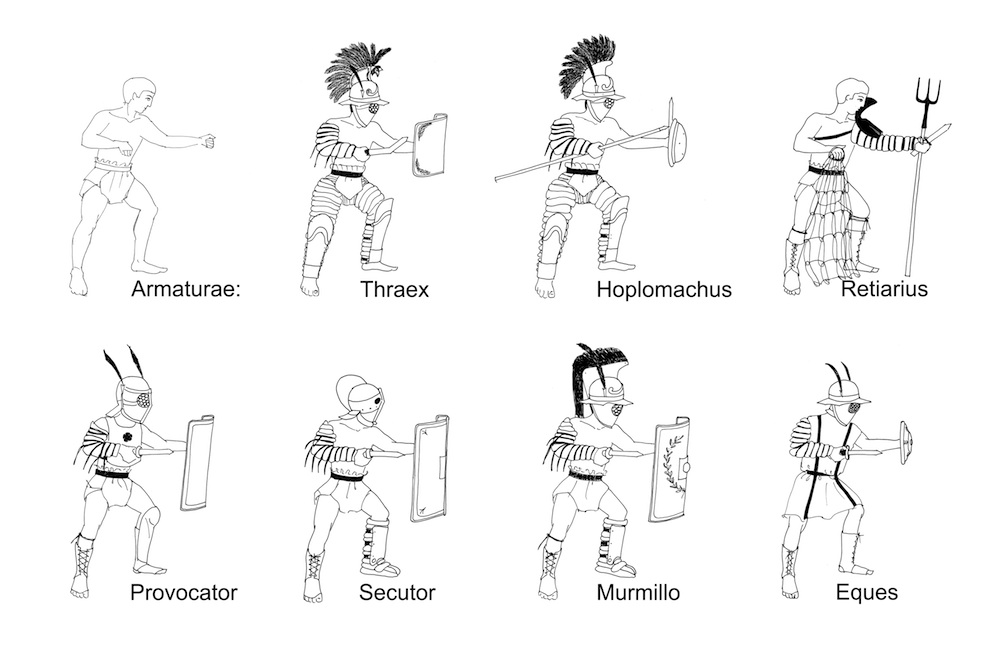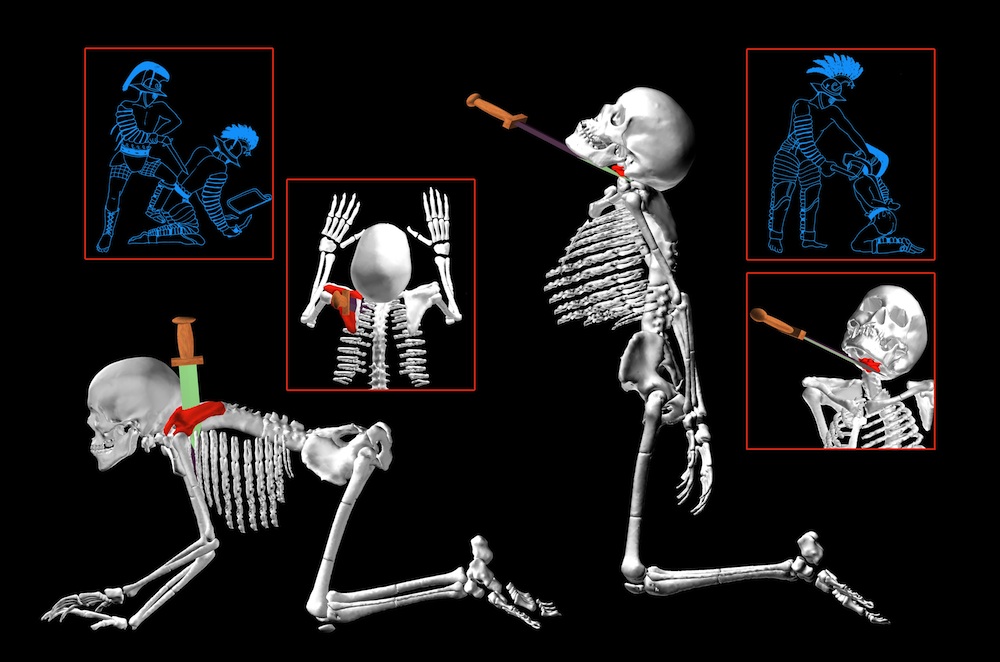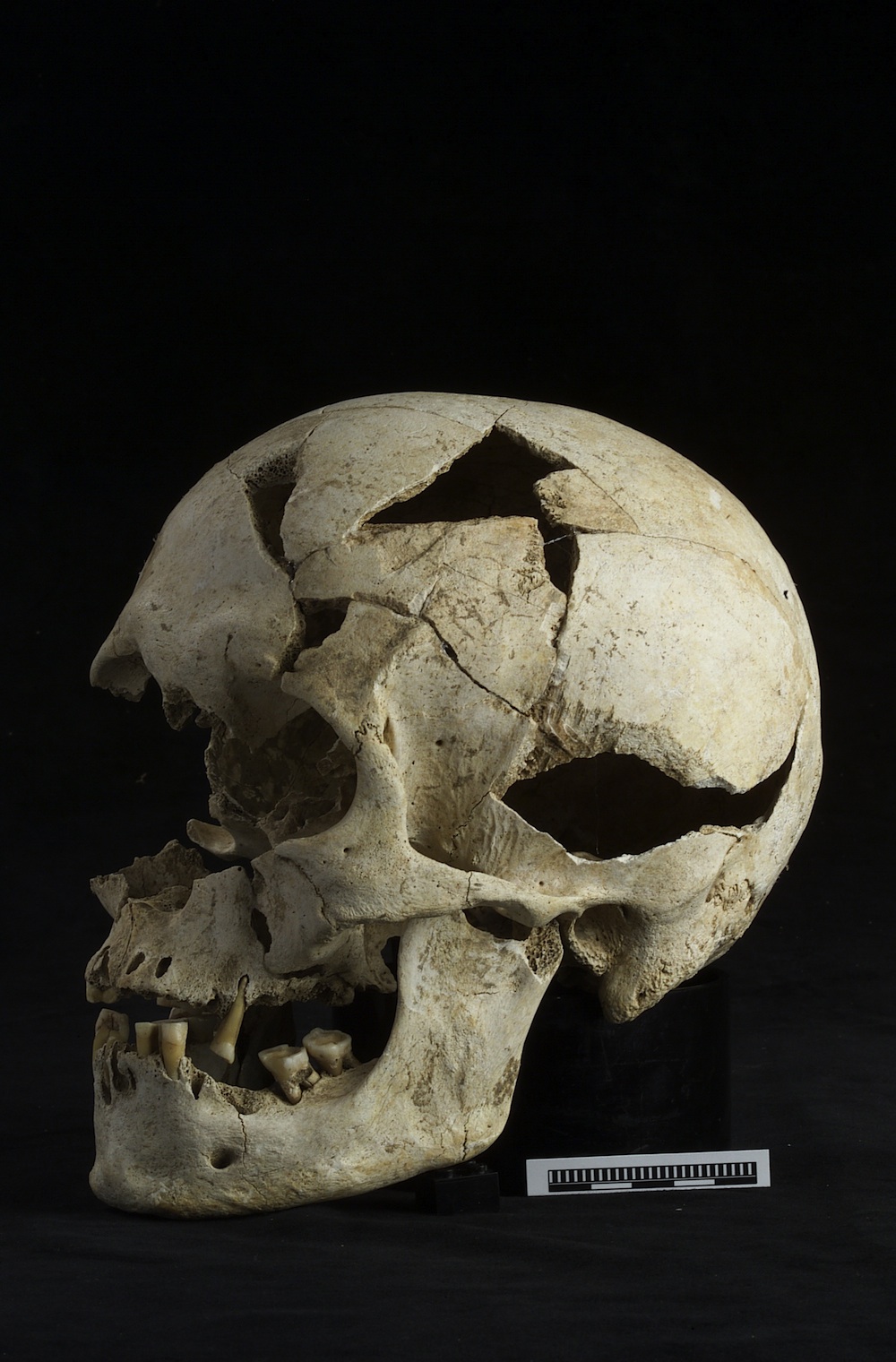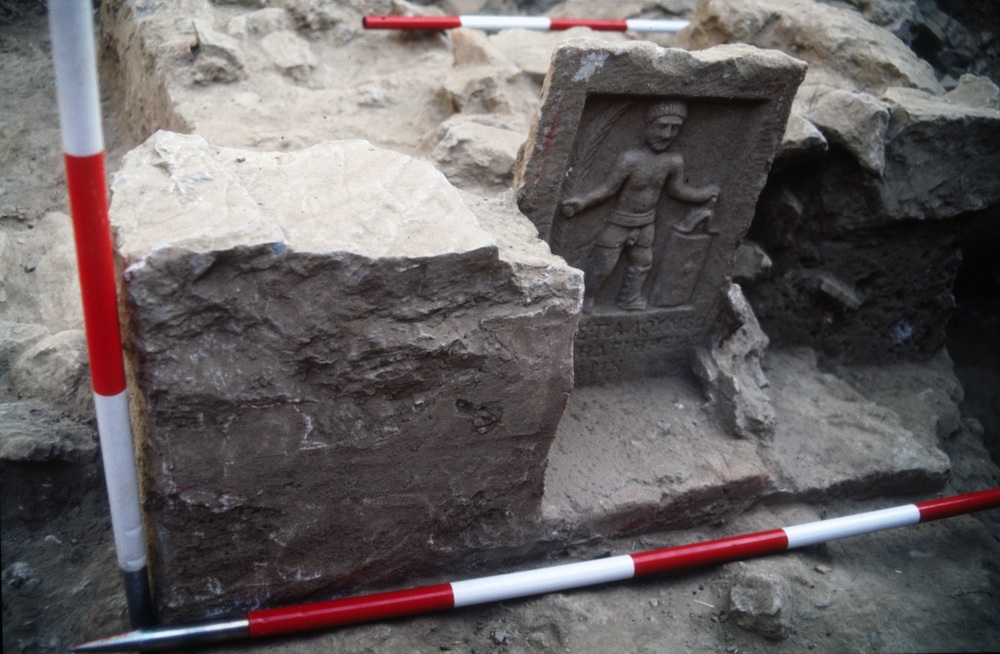Archaeologists digging at a site in Ephesus, Turkey unearthed a mass burial pit with the battle-scarred bones of slain gladiators. The burial site have revealed a lot about the rules of combat and the types of armor the gladiators wore. Now, a new chemical analysis of the bones suggests the gladiators may have drunk an ash-filled, vinegary beverage. The analysis also revealed that the gladiators ate a mostly vegetarian diet rich in legumes. The burial pit was part of a cemetery with tombstones that depicted gladiatorial combat. [Read full story on the gladiator's diet]
Ancient Roman city
Archaeologists unearthed the burial pit in the ancient city of Ephesus, Turkey in 1993, while surveying the ancient procession path between the Artemis Temple and the city center. The pit was not far from the gladiator stadium and bore 68 bodies, mostly of men between the ages of 20 and 30. (Photo credit: Loesch et al, PLOS ONE 2014)
Battle scarred
Many of the bodies in the pit bore severe injuries, such as head trauma, according to a 2006 article in the journal Forensic Science International. Here, one of the skeletons of the ancient gladiators. (Photo credit: Wolfgang Pietsch / ÖAI)
Armor types
The injuries sustained by the fighters were consistent with the historical descriptions of weapon types and armor avavailable during the deadly bouts. For instance, wounds from the popular "gladiatorial trident" were evidence in a few injuries. (Photo credit: Kanz / MedUni Wien)
Get the world’s most fascinating discoveries delivered straight to your inbox.
Death blows
Gladiators were also reputed to have strict rules of combat that allowed for certain types of death blows. The injuries on the skeletons seemed to corroborate historical accounts and are quite different from the evidence of "excessive violence" found on skeletons from the Medieval period, according to the article. (Photo credit: Kanz / MedUni Wien)
Head injuries
Despite the fact that most of the gladiators probably wore helmets, head injuries, such as the one shown here, were common. The gladiators may have been felled with a "deathblow" technique the Roman believed a hammer-wielding death god called Dis Pater used.
Unusual cemetery
In the Roman Empire, gladiators weren't supposed to have proper burials. But these people were in a cemetery plot that included tomb reliefs depicting gladiators. It's likely, therefore, that the owner of the local gladiator school may have purchased or rented the plot for his students. (Photo credit: Wolfgang Pietsch / ÖAI)

Tia is the editor-in-chief (premium) and was formerly managing editor and senior writer for Live Science. Her work has appeared in Scientific American, Wired.com, Science News and other outlets. She holds a master's degree in bioengineering from the University of Washington, a graduate certificate in science writing from UC Santa Cruz and a bachelor's degree in mechanical engineering from the University of Texas at Austin. Tia was part of a team at the Milwaukee Journal Sentinel that published the Empty Cradles series on preterm births, which won multiple awards, including the 2012 Casey Medal for Meritorious Journalism.








